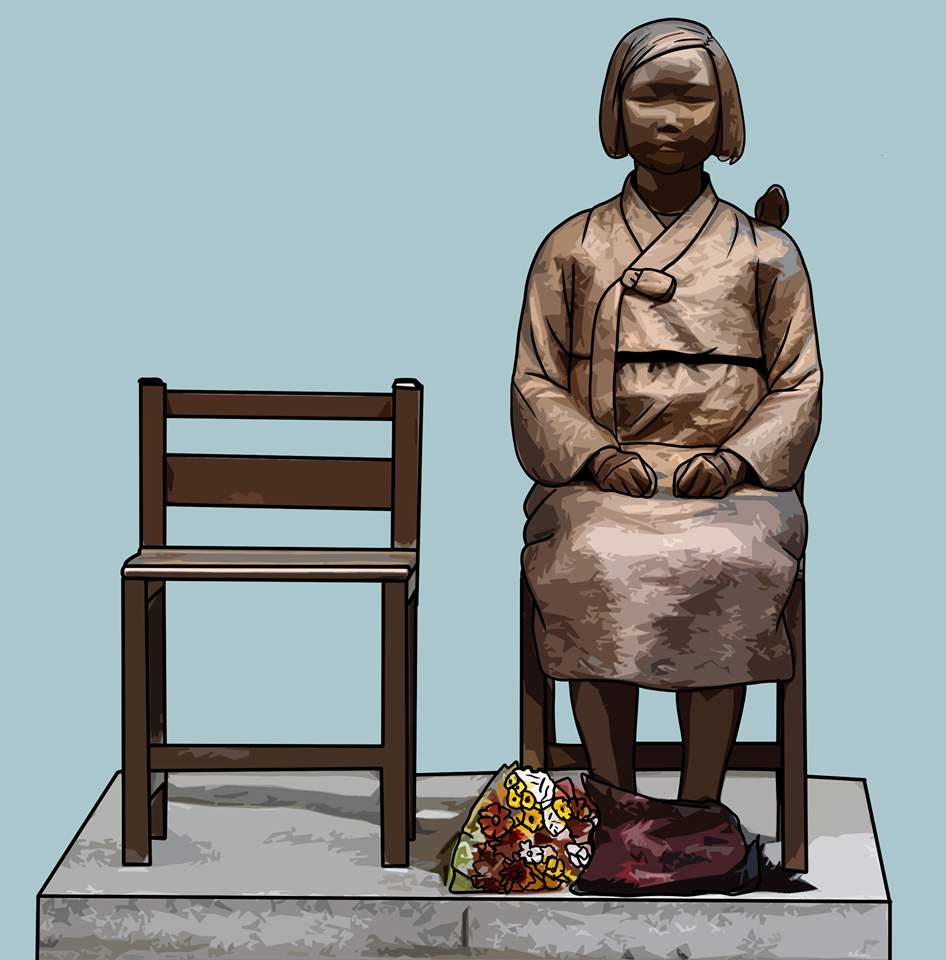- 한국어
- English
- 日本語
- 中文
- العربية
- Español
- Français
- Deutsch
- Pусский
- Tiếng Việt
- Indonesian
By Honorary Reporter Yomna Magdy Ahmed from Egypt
Illustration= Yomna Magdy Ahmed

Coal mine
Japan's atrocities committed in Korea during the Japanese colonial era included the sexual enslavement of young Korean girls and forced mobilization of Koreans for work.
Hundreds of Koreans were forced to work at a coal mine on Hashima (Battleship) Island under inhumane conditions. They received no nutritious food except for dried sweet potatoes and beans. Workers had to spend 12 hours a day in the mines at a depth of 1,000 meters below sea level. Moreover, they were crammed into small apartments while their Japanese managers and soldiers lived in modern buildings with excellent conditions. The victims remained completely isolated from the outside world and were exposed to toxic gases including methane. Hashima is a symbol of industrialization to Japan but was a living hell to its victims.
Another form of slavery Japan practiced during the colonial era was forcing Korean girls into sexual slavery who were euphemistically called "comfort women" for the imperial Japanese army. The girls had to obey Japanese soldiers under harsh conditions to stay alive or face death and the exile of their families from Korea. "The Statue of Peace" symbolizes these victims as well as the many who died in agony because of such slavery.

"The Statue of Peace"
The best apology Japan can make is to educate its young generation on what their ancestors and their nation did before and during World War II. The key for Japan is to admit to its war crimes, correct its history books, and document and exhibit the truth at the Industrial Heritage Information Centre so that the world can know the truth. I hope that the suffering of the Korean victims during the Japanese colonial era can get the proper acknowledgment and never be forgotten.
chaey0726@korea.kr
*This article is written by a Korea.net Honorary Reporter. Our group of Honorary Reporters are from all around the world, and they share with Korea.net their love and passion for all things Korean.
Most popular
- Council sets minimum hourly wage in 2026 at KRW 10,320
- Songs from 'KPop Demon Hunters' dominate global Billboard charts
- Songs from animated K-pop film rule Spotify daily chart in US
- 28th annual Boryeong Mud Festival to offer more night events
- Exhibition 'K-Comics World' hawks webtoons in 5 countries
